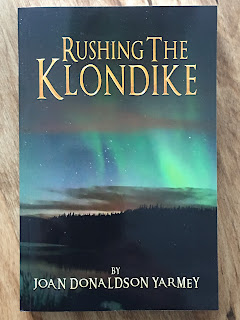https://www.bookswelove.com/donaldson-yarmey-joan/
https://books2read.com/Romancing-the-Klondike
https://books2read.com/Rushing-the-Klondike
https://www.bookswelove.com/authors/canadian-historical-mysteries/
I am a Canadian writer and all my mystery, historical, romance, and young adult novels are set in Canada. Canada is the second largest country in the world and home to a wide variety of rocks, plants, and animals. Here are some of the oldest, largest, and smallest examples.
Canada’s largest tree is a western red cedar called the Cheewhat Giant. It is in the Pacific Rim National Park on Vancouver Island. It is 56m (182 ft) tall and has trunk diameter of 6m (20ft). The Cheewhat Giant is also the biggest western red cedar in the world.
Canada’s tallest tree is a Sitka spruce in the Carmanah Valley on Vancouver Island. It stands 95m (312ft) high.
Canada has the oldest exposed bedrock on earth and it is the oldest section of our planet’s early crust. It is known as the Nuvvuagittuq greenstone belt and is in Northern Quebec on the eastern shore of the Hudson Bay. It has been analyzed by geologists and they have determined that the rock samples range from 3.8 to 4.28 billion years old. The earth its 4.6 billion years old and there are very few remnants of its early crust, since most of it has been rotated back into the Earth’s interior by the movement of the large tectonic plates over billions of years.
The Banff Springs Snail isn’t the smallest snail in the world; that is held by the Augustopila psammion species found in a cave in Vietnam and four of them fit inside a grain of sand. However, the only place in the world where the Banff Springs Snail is found is in a handful of thermal springs in Banff National Park in the province of Alberta. The snail was first discovered in 1926 and the largest of the snails are about the size of a small fingernail.
The world’s largest colony of Lesser Snow Geese can be found on the Great Plain of the Koukdjuak on the western side of Baffin Island in the territory of Nunavut, Canada. Beginning in late May as many as two million snow geese migrate there to breed and when the young hatch, they and their parents go further inland to feed. By early September the young are large enough to head south for the winter.










.jpg)









